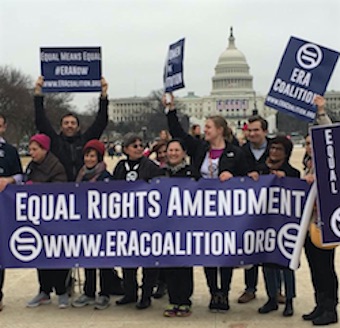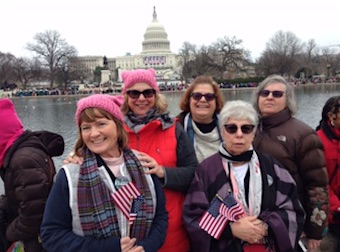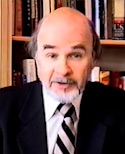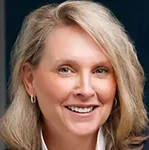The Million Women March Jan. 21 (actually several million across the nation) made its point and signals increased use of public demonstrations to get attention.
Lots of other messages are going to be drowned out since “a kind of hysterical oppositionalism” has surfaced in the press to combat President Trump’s “own tabloid style,” wrote New York Times columnist Ross Douthat Jan. 22.
 |
 |
 |
|
Photos by O'Dwyer's Associate Publisher Jane Landers (L). |
|
Something pretty amazing happened this weekend. All around the world women banded together to peacefully protest an election. Whatever your political values or your personal beliefs, this weekend it was hard to look away from the sight of so many voices raised as one. So many women (and men) from different races, cultures and countries coming together with a shared purpose. The fact that you and I live in a country and in a world where peaceful opposition to political leadership is possible is something to cherish and hold dear. Because whether you agree with the cause or not, this right is precious to us all. -- Cathleen O'Connor Women, Democrat's alike either told they are not doing enough or they need to do more. I participated and I'm proud of it. Those who call it a temper tantrum or baby killers or sore losers just don't understand what is at stake here. I marched for my 85 yr old Mom's Social Security & Medicare; for my college daughter's health insurance (pre-existing condition) & future, for public education, for the environment, for wage equality, for jobs, for marginalized individuals/groups, for the disabled, for children, for the elderly, for my constitutional rights, for the USA! #WHYIMARCH #STRONGERTOGETHERAZ Happy, empowered, strong, unity, hopeful, and peaceful. Many were impressed by the number of marchers for AZ, a red state. Some were disappointed more democrat legislators didn't speak at the event. -- Mary Keyes |
“Slamming Media, Trump Advances Two Falsehoods,” screamed a NYT front page headline Jan. 22. At issue are the size of the D.C. crowd as estimated by the Trump team and whether there is a Trump “rift” with the Central Intelligence Agency.
When not only reporters but average citizens find they can’t get through to officials or company reps on the phone or via emails, the only recourse is to take to the streets, which is what the Million Women March did. Women do not want to lose their right to have abortions. They want many other things, along with all Americas, such as healthcare that is affordable.
They’re disappointed that Hillary Clinton lost the election on a “technicality” (the Electoral College) since she won the popular vote by 2.8 million.
There’s a lot of rage that charges of email abuse by Clinton were made twice by the FBI and twice withdrawn. What the Electoral College did was legal but that does not make it fair, critics feel.
This rage is bound to manifest itself in many ways and it’s a phenomenon that reporters and communicators must be aware of.
PR Has Role as Mediator
PR people must not shrink from this battlefield but must try to insert their historic role of being mediators.
Their role has diminished in recent years as companies, institutions and trade associations relied more and more on lawyers for advice. Marketers have been emphasizing direct contact with customers and potential customers, bypassing media.
Media are going to win more attention from the public if they can do a good job of documenting what are flaws in proposed changes in programs such as healthcare.
Women organized to deliver a powerful message to the Trump Administration and the nation over the weekend.
Women Control PRSA; Key Policies Set in 1980
Women should show the same organizational skills in the PR industry since about 80% of working PR people are women. The board of the largest PR group, the 22,000-member PR Society of America, is comprised of nine women and eight men.
The women are 2017 chair Jane Dvorak, Lakewood, Colo., counselor; treasurer Debra Peterson, CenturyLink, Kan.; Michelle Olson, Fingerpaint, Scottsdale, Ariz.; Jo Ann LeSage Nelson, Pierce Comms., Albany; Amy Coward, Palmetto Health Foundation, Columbia, S.C; Bonnie Upright, Olympus Foundation Mgmt., Orange Park, Fla.; Joyce Lofstrom, HIMSS, Chicago, and Ronele Dotson, RAD Strategies, Reno.
|
|
Key policies that still dominate the Society, including having an abrasive relationship with the media and limiting the flow of information were set by 1980 president Patrick Jackson.
The Epping, N.H., counselor rode to president on a tide of anti-New York fever. He and others found there was too much influence by New York members and said power was flowing out of New York never to return. He was right. He was a major influence in PRSA affairs until his death in 2001 and his influence continues. Current offices of the Jackson firm are in Rye, N.H.
Jackson, editor of the weekly PR Reporter newsletter, dismissed press friendly executive director Rea Smith, who had invited reporters to be Silver Anvil judges and let reporters use the library. A 22-year staff veteran, she was transferred to the PRSA Foundation in another office. A staffer found her dead in her bathtub a year later with a plastic bag on her head.
Assn. Pros Became Staff
Jackson, showing a distrust of PR pros at Society h.q., felt the staff should be “association professionals” rather than PR people. About ten staffers with press and PR backgrounds were either fired or quit. Association executive Betsy Kovacs became staff head and kept her distance from the press.
Reporters were no longer welcome at h.q. Donna Peltier, who joined as PR director in 1984, only went to lunch with this reporter three times during her nine years there and Kovacs was present each time.
From 1980 to 2017, a span of 37 years, only one PR careerist, Catherine Bolton, headed the staff (2001-2006). Kovacs was succeeded as staff head by Ray Gaulke in 1993. He received a five-year contract in 1999 but quit suddenly in 2000, for reasons never told, to make way for Bolton who had joined in a PR post. Bill Murray headed the staff from 2007 to 2014 and was succeeded by Joseph Truncale.
The seven highest paid staffers in 2015 collected $1,654,006 in pay. None has PR background.
One NYC Conference in 24 Years
Jackson told Morley Safer of “60 Minutes” in 1994 that his advice to clients on the press was “duck ‘em, find ways to go direct, and screw ‘em.” Consuelo Mack, anchor of the Wall Street Journal Report, was moderator of the Center for Communication panel.
PR people must be "meticulous" in revealing any information about their employers, he said. They should not "get into the trap of just layng it all out there because you can do a great deal of harm to an organization on an issue that has nothing to do with the public interest..."
This conflicts with a main tenet of PRSA which calls for the "free flow of information." Organizarions have "every right" to keep details of their "interior workings" to themselves, Jackson also said.
The women who control the board of PRSA can change the dysfunctional relationship the Society has with members as well as the media. The Society has too many undemocratic and anti-informational practices. Rule by the small minority of APR members should be ended. A similar abrasive relationship has now unfortunately gripped national government/media to the detriment of both and the public.
One result of the anti-New York sentiment is that only one national conference has been held in the city since 1992—a period of 24 years. None are planned.


 Pat Jackson
Pat Jackson
 Maggie Moran, who is well-connected in New Jersey and New York Democratic politics, has established Moxie Strategies in Asbury Park, NJ.
Maggie Moran, who is well-connected in New Jersey and New York Democratic politics, has established Moxie Strategies in Asbury Park, NJ. Husch Blackwell Strategies has added FleishmanHillard alum Michael Slatin as a principal in its public affairs group.
Husch Blackwell Strategies has added FleishmanHillard alum Michael Slatin as a principal in its public affairs group. Rory Cooper, a veteran Republican operative and policy specialist, has joined Teneo’s Washington office as senior managing director in its strategy & communications practice.
Rory Cooper, a veteran Republican operative and policy specialist, has joined Teneo’s Washington office as senior managing director in its strategy & communications practice. Brian Fallon, who served as national press secretary for Hillary Clinton’s 2016 presidential run, is signing on next month as Vice President’s Kamala Harris’ campaign communications director.
Brian Fallon, who served as national press secretary for Hillary Clinton’s 2016 presidential run, is signing on next month as Vice President’s Kamala Harris’ campaign communications director. TikTok is nothing more than a Chinese propaganda tool that poses “a grave threat to America’s national security and, in particular, impressionable children and young adults,” say two Congressmen who want the platform registered as a foreign agent.
TikTok is nothing more than a Chinese propaganda tool that poses “a grave threat to America’s national security and, in particular, impressionable children and young adults,” say two Congressmen who want the platform registered as a foreign agent.


 Have a comment? Send it to
Have a comment? Send it to 
No comments have been submitted for this story yet.